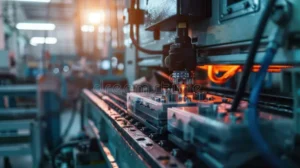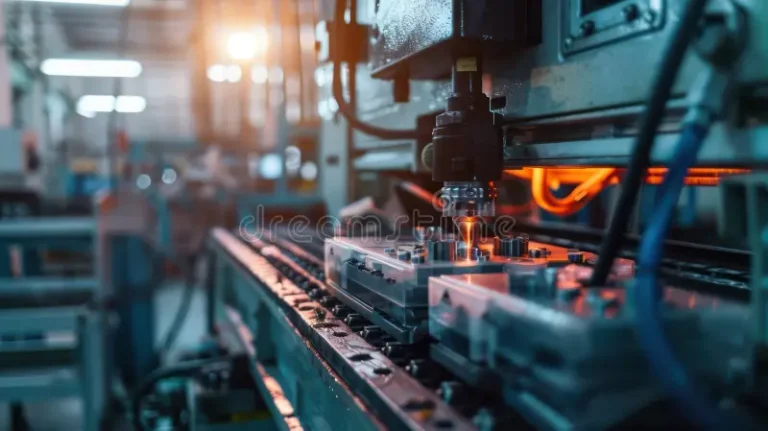Piping technology is a term that refers to the systems and methods used to transport liquids, gases, and sometimes solids through a network of pipes. These pipes are commonly found in homes, factories, and other large facilities. But what exactly does piping technology mean, and why is it so important? In this article, we will explore the basics of piping technology, how it works, and its significance in our daily lives.
What Is Piping Technology?
Piping technology is all about the design, construction, and maintenance of pipe systems that carry different materials, like water, oil, or gas, from one place to another. Imagine the pipes in your home that bring water to your sink or take waste away from your toilet. These are simple examples of piping technology. But on a larger scale, piping technology can involve miles of pipelines that transport oil across countries or complex systems that deliver natural gas to power plants.
The Importance of Piping Technology
Piping technology is essential for many reasons. First, it ensures that vital resources like water, gas, and oil can be delivered safely and efficiently. Without piping technology, we wouldn’t have access to clean drinking water, heating in our homes, or the fuel needed for cars and airplanes. It also plays a crucial role in industries like manufacturing, where pipes are used to move chemicals, steam, and other materials needed to create products.
How Piping Technology Works
At its core, piping technology involves connecting various pipes together to form a network. These pipes are usually made from materials like steel, copper, or plastic, depending on what they need to transport. Engineers design these systems carefully to ensure they can handle the pressure and flow of the material inside. Special fittings, like valves and joints, are used to control the flow and direction of the material, making sure everything moves smoothly.
Types of Piping Systems
There are different types of piping systems depending on what they transport:
- Water Pipes: These are used to bring clean water to homes and businesses and remove wastewater. They are often made from copper or PVC (a type of plastic).
- Oil and Gas Pipes: These are large, strong pipes made from steel or other tough materials. They transport oil and natural gas from one place to another, often over long distances.
- Chemical Pipes: In factories, special pipes are used to move chemicals safely. These pipes need to be resistant to corrosion and high temperatures.
- HVAC Pipes: These pipes are part of heating, ventilation, and air conditioning systems, helping to regulate temperature and air quality in buildings.
The Role of Engineers in Piping Technology
Engineers play a significant role in the world of piping technology. They are responsible for designing the piping systems, making sure they are safe and efficient. This involves careful planning, as engineers must consider factors like the material of the pipes, the pressure of the fluids, and the environment in which the pipes will be used. They also need to ensure that the pipes are properly maintained to avoid leaks or other problems that could lead to accidents.
Common Materials Used in Piping Technology
Different materials are used in piping technology depending on the type of system and what it will carry:
- Steel: Strong and durable, steel is often used in large pipelines, especially those that carry oil or gas.
- Copper: Copper is commonly used in homes for water pipes because it is resistant to corrosion and easy to work with.
- PVC (Polyvinyl Chloride): This plastic material is lightweight, affordable, and resistant to chemicals, making it ideal for both water and waste pipes.
- PEX (Cross-linked Polyethylene): PEX is another type of plastic used in plumbing. It is flexible and can withstand extreme temperatures, making it popular for hot and cold water systems.
The Process of Installing a Piping System
Installing a piping system involves several steps:
- Design: Engineers create a blueprint for the system, choosing the best materials and layout.
- Preparation: The area where the pipes will be installed is prepared. This might involve digging trenches or clearing space in a building.
- Installation: The pipes are carefully connected according to the design. Fittings like valves and joints are added to control the flow of the material.
- Testing: Once the system is installed, it is tested to ensure everything works correctly. This might involve checking for leaks or making sure the pressure is right.
- Maintenance: After installation, the piping system needs regular maintenance to keep it in good condition. This can involve cleaning, inspecting for damage, and making repairs if necessary.
Challenges in Piping Technology
Piping technology, while essential, also faces several challenges:
- Corrosion: Over time, pipes can corrode, especially if they are carrying corrosive materials or are exposed to harsh environments. This can weaken the pipes and lead to leaks or bursts.
- Pressure: High-pressure systems, like those in oil and gas pipelines, require special care. If the pressure is too high, it can cause the pipes to fail.
- Temperature: Pipes that carry very hot or cold materials need to be made from special materials that can handle these extreme temperatures without breaking or becoming brittle.
- Environmental Impact: Building large pipelines can have an impact on the environment, especially if they cross through natural habitats. Engineers need to plan carefully to minimize this impact.
Innovations in Piping Technology
As technology advances, so does piping technology. New materials, like advanced plastics and composites, are being developed to create stronger, more durable pipes. Additionally, smart technology is being integrated into piping systems, allowing for real-time monitoring of flow, pressure, and temperature. This helps in quickly identifying and fixing any problems, reducing the risk of leaks or other issues.
The Future of Piping Technology
The future of piping technology looks promising, with ongoing research and development focused on creating more efficient and sustainable systems. For example, scientists are exploring ways to create pipes that can repair themselves if they develop small cracks or leaks. There is also a growing interest in using renewable materials in piping systems, reducing the environmental impact of building and maintaining these essential networks.
Why Piping Technology Matters to Everyone
Piping technology might seem like a complex and technical field, but it has a direct impact on our daily lives. From the water we drink to the fuel that powers our cars, piping technology makes it possible for us to access the resources we need to live comfortably. By understanding the basics of piping technology, we can appreciate the work that goes into designing, building, and maintaining these critical systems.
Conclusion
Piping technology is a fascinating and essential part of modern infrastructure. It ensures that we have access to clean water, reliable energy, and the many other resources that make our lives easier. By continuing to innovate and improve piping systems, engineers help to build a safer, more efficient, and sustainable future. Understanding the basics of piping technology allows us to see the world in a new light, recognizing the importance of the systems that quietly support our everyday lives.








